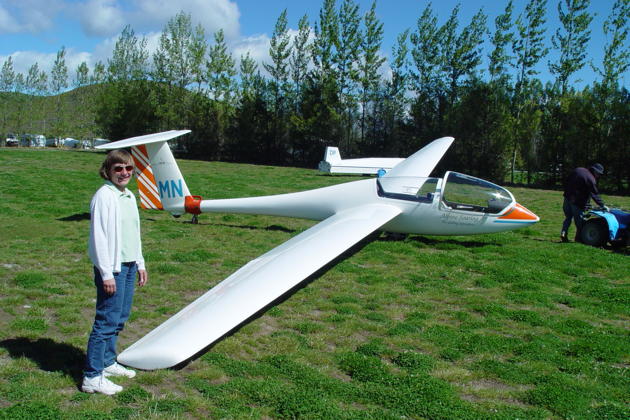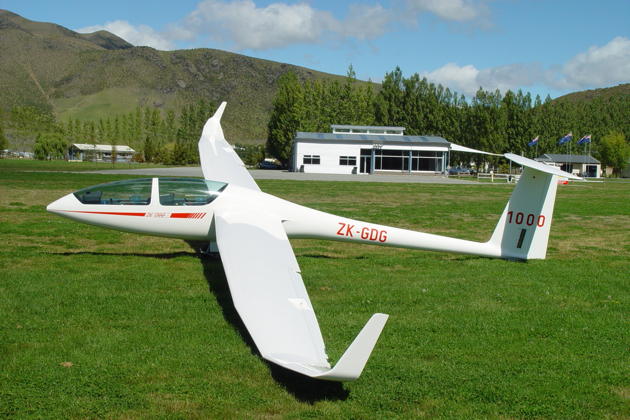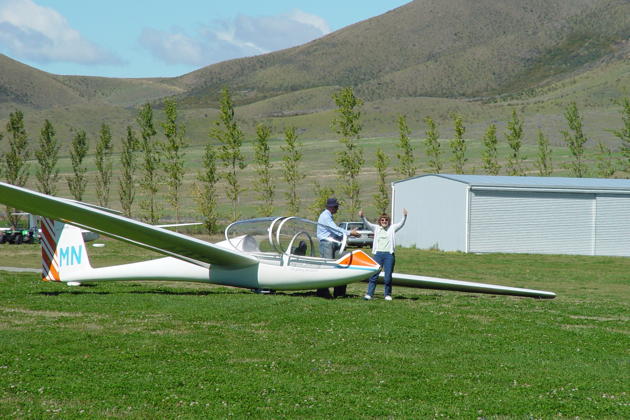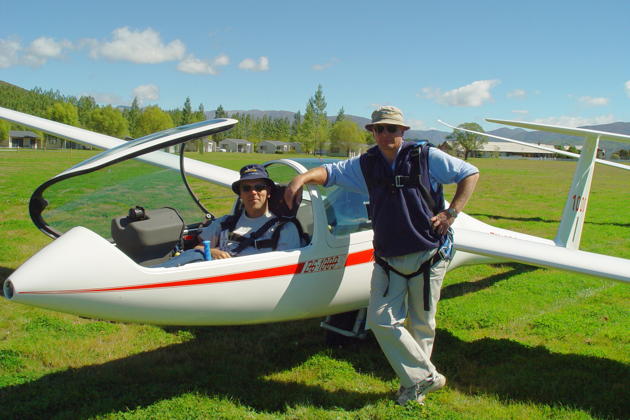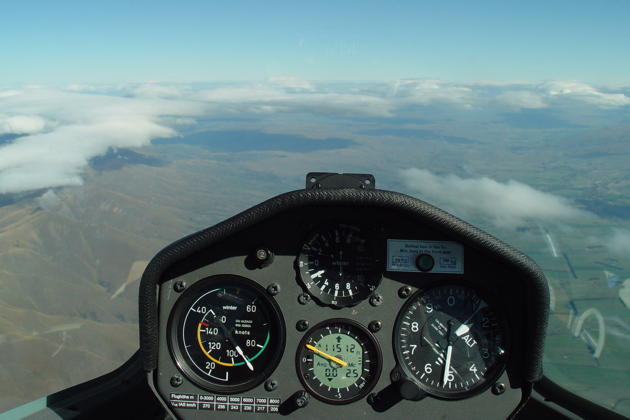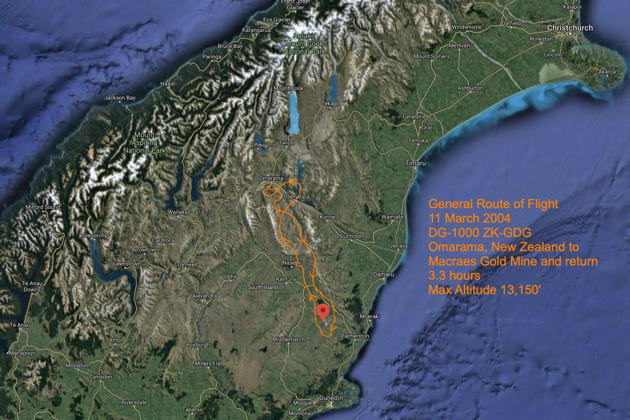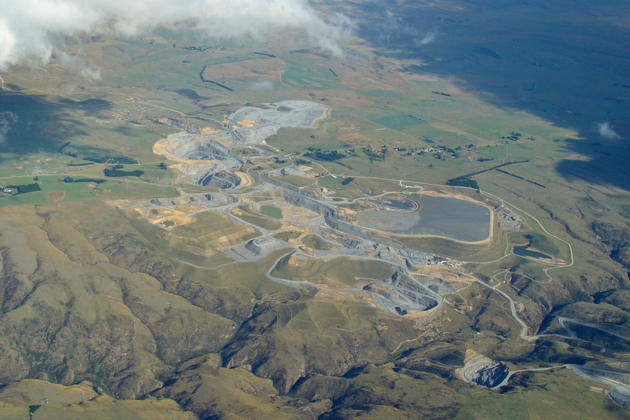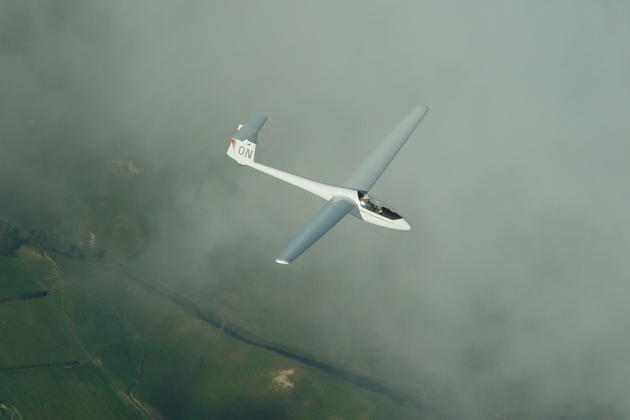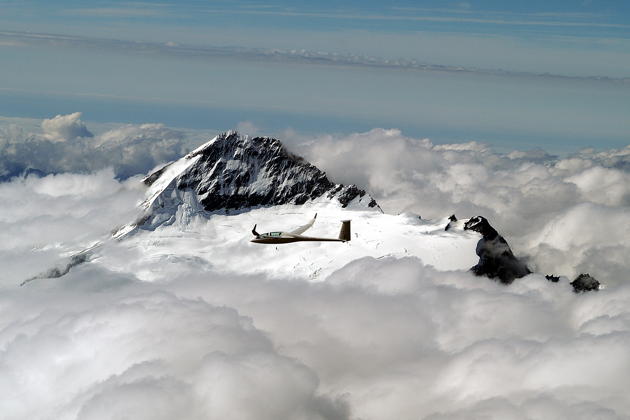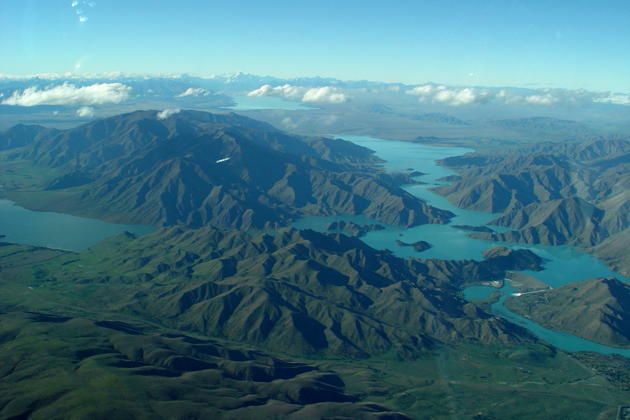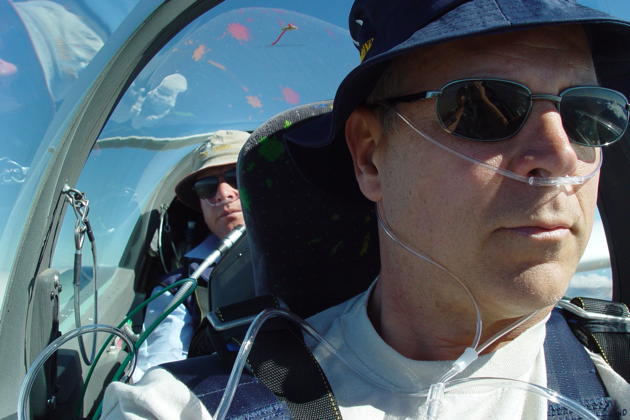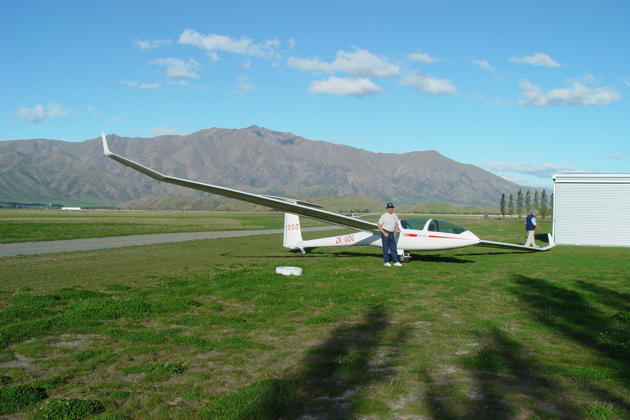FlightLog Archive
∟Aircraft Flown
DG-1000 Soaring in New Zealand - Mar 2004
As part of our 25th wedding anniversary trip, my wife Mary and I spent an outstanding 2 1/2 weeks touring New Zealand in March 2004. The weather in February had been the wettest in New Zealand in 150 years, so after raining themselves out, our arrival in March coincided with mostly clear skies and beautiful weather for our entire trip. We spent most of the vacation on the South Island, and planned on a visit to Omarama, with its reputation of fantastic soaring conditions.
I scheduled flights for both of us on March 11th, with Mary looking forward to sightseeing, while I hoped to savor any good ridge or wave soaring available. Mary took off first in one of Alpine Soaring's Twin Grobs with visiting UK instructor Bo Nilsson. Since it was still a 'blue' day, everyone on the field watched Bo and Mary's progress off tow as they proceeded to climb quite well in some invisible thermals, with wisps of cu's soon starting to build. Mary and Bo headed out for some sightseeing, and Mary had a blast!
As Mary was flying, the grid filled up with folks hoping to use the thermals and ridge lift to do some cross-country soaring to the southeast. Doug Hamilton, Alpine Soaring chief instructor, and I brought out their new DG-1000 and prepped it for flight.
As we got ready for takeoff, Doug and I discussed a cross-country route that we would attempt to the southeast of Omarama as a leader-follower with a local New Zealand Libelle pilot, Paul Marshall. Coincidentally, Paul and I had conversed over the Internet months before when he sent me some gorgeous New Zealand mountain wave photos, and we just happened to be at Omarama on the same day. Our goal, if the conditions were right, was to cruise down to the southeast toward Dunedin, with a turn point at Macraes Mine, New Zealand's largest gold mine.
After a long takeoff roll to the east behind the relatively underpowered Cessna 172 towplane, we climbed in choppy conditions from Omarama's 1380 ft field elevation back over the field and released at about 3900 ft MSL (about 2500 ft AGL) over the ridges to the southeast of Omarama. I was able to release in some spotty lift, and I began some tight thermaling, enjoying the DG-1000's smooth flight controls and surprising agility for its long wingspan.
With some good pointers from Doug on good lift locations, I was able to transition to the ridge and continue climbing, working the ridge from 6500 ft to about 8000 ft. It started to look like wave conditions were forming, not with classic smooth lenticulars, but with alternating lanes of clear air and long clouds aligned perpendicular to the prevailing winds. With our 8000 ft in hand, we headed southeast and began climbing in mountain wave, aligned generally in southeast lanes.
Passing about 9000 ft, we became firmly established in very smooth wave conditions, which, when combined with the already smooth flight characteristics of the DG-1000, made us seem rock solid in our climb. We donned our oxygen cannulas, and proceeded to spend the next two+ hours exploring the sights of New Zealand from above 10,000 ft. I headed cross-country, generally southeast between the eastern coastal towns of Omaru and Dunedin.
Back at Omarama, most of the 8 or 9 other sailplanes were having a hard time with the scratchy thermal conditions, with only one other sailplane, a Mosquito flown by Ron Davidson, able to transition to the wave and to head out cross country. Since our follower didn't appear to be able to join us, we explored the wave and fairly quickly made it to our main turnpoint at the large gold mine at Macraes.
As we turned back to the northwest, we started comparing GPS positions with Ron Davidson, and figured we were within a few miles of each other. Although I've had to start using reading glasses, my long-range vision is still fine, and I was able to pick out Ron's speck, and we joined up for some formation flying and a few air-to-air photos.
After a few photos, we split paths with Ron, but I was able to re-acquire some more decent wave lift as we headed back toward Omarama, topping off at 13,150 ft. The altitude provided a perfect perch for some glorious views of the lakes and mountains of the Southern Alps, with Mt. Cook rising high in the distance.
We rejoined with another local sailplane as we returned to the Omarama area, then smoothly let down in descending spirals. After 3.3 hours in-flight, a smooth landing to the east capped off a perfect 'welcome to New Zealand' soaring flight. Now for my next flight in New Zealand...
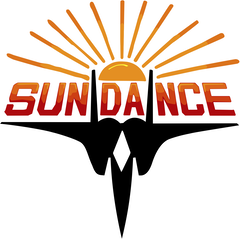 KASPRZYK
KASPRZYK